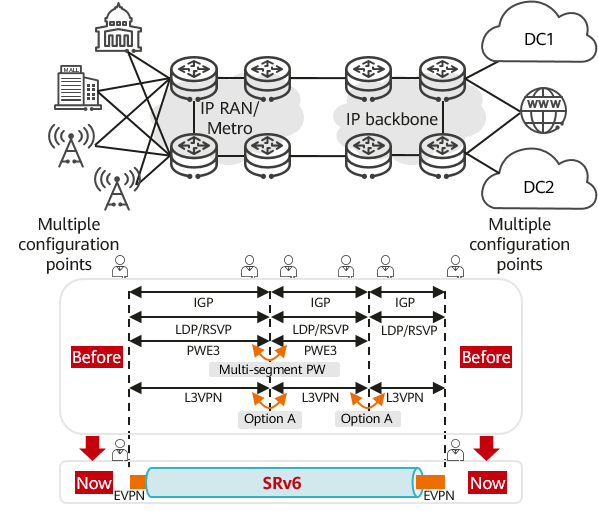SRv6 Application on an IP Bearer Network
As shown in Figure 1, an IP bearer network carries many cross-domain services, such as mobile 3G/4G, voice over IP (VoIP), and private line services. Deploying such services segment by segment on a network requires multiple departments to collaborate during the segment-by-segment cross-domain configuration. This not only complicates E2E deployment, but also slows down service provisioning and extends the deployment period to months, negatively affecting service operations. In addition, due to the coexistence of multiple protocols, carriers are in need of a simplified network architecture in order to automate and accelerate service deployment.
SRv6 is introduced to address the preceding issues, offering the following benefits:
- Simplified network protocols: SRv6 eliminates the need to use the complex MPLS protocol, thereby radically simplifying the network architecture. The SRv6-based network architecture does not require any MPLS configuration for services and retains only two basic network protocols (IGP and BGP).
- Fast service provisioning: SRv6 simplifies cross-domain deployment based on IPv6 route reachability. In SRv6, non-key services are carried over SRv6 BE, SRv6 services are deployed only on the ingress and egress, and transit nodes only need to support IPv6, achieving significant improvements in network O&M efficiency. Furthermore, B2B private line services are carried over SRv6 TE Policy, shortening the service provisioning time to one day thanks to automating the provisioning process.
- Sustainable evolution: SRH programmability enables SRv6 to decouple networks from services. This allows networks to continuously evolve without the need for additional protocols.
